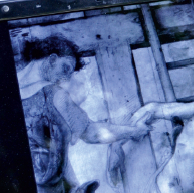
Programa de Doutoramento em Gestão
Desenvolver a industria 4.0 pela Service Science - Um modelo conceptual para o desenvolvimento do setor das rochas ornamentais Português, em contexto de procurement BIM
Agostinho da Silva

Orientadores: Dionísio, Andreia Teixeira Marques & Coelho, Luís Alberto Godinho
This thesis aims an exploratory evaluation of the Industry 4.0 (I4.0) impact on Portuguese Ornamental Stone (OS) firms’ response to the Threats resulting from the Building Information Modelling (BIM) procurement. The transition witnessed from the Third to the Fourth Industrial Age leads to the emergence of paradigms such as BIM, seeking efficiency in Architecture, Engineering and Construction (AEC) through a global approach and procurement oriented towards standardisable products and I4.0, where production comes to be supported by Cyber-Physical Systems (CPS). Integrated in the AEC supply chain, the OS sector shows Portugal to be the eighth country in OS trade worldwide, and the second per capita, with its competitiveness based on the products customization. BIM represents threats for its sustainability, particularly in firms of the Cluster Portugal Mineral Resources (CPMR). The literature review showed that Service Science (S-S) is an inter-disciplinary scientific field that combines Organisation with Tchnological Knowledge, with a view to categorizing, innovating and creating value for Service-Systems. Guided by the pragmatic paradigm and using the mixed methodology of parallel convergence, this research focuses on conceptualization of a Service Science Framework (Inovstone4.0), to which was applied a representative sample of CPMR companies. This Framework has allowed to measure the evolution of Key Concern Indicators (KCI) indexed to stakeholders’ concerns, when operations shifts from the current best practices to I4.0 operattions. From the results, it has been found significant relief of stakeholder’s concerns, regarding the time to deliver, costs, footprint and products conformity, when in BIM procurement context, the production evolves to I4.0, allowing to conclude that in technical terms, the impact of I4.0 on the threats arising from BIM procurement in CPMR tends to be positive.




